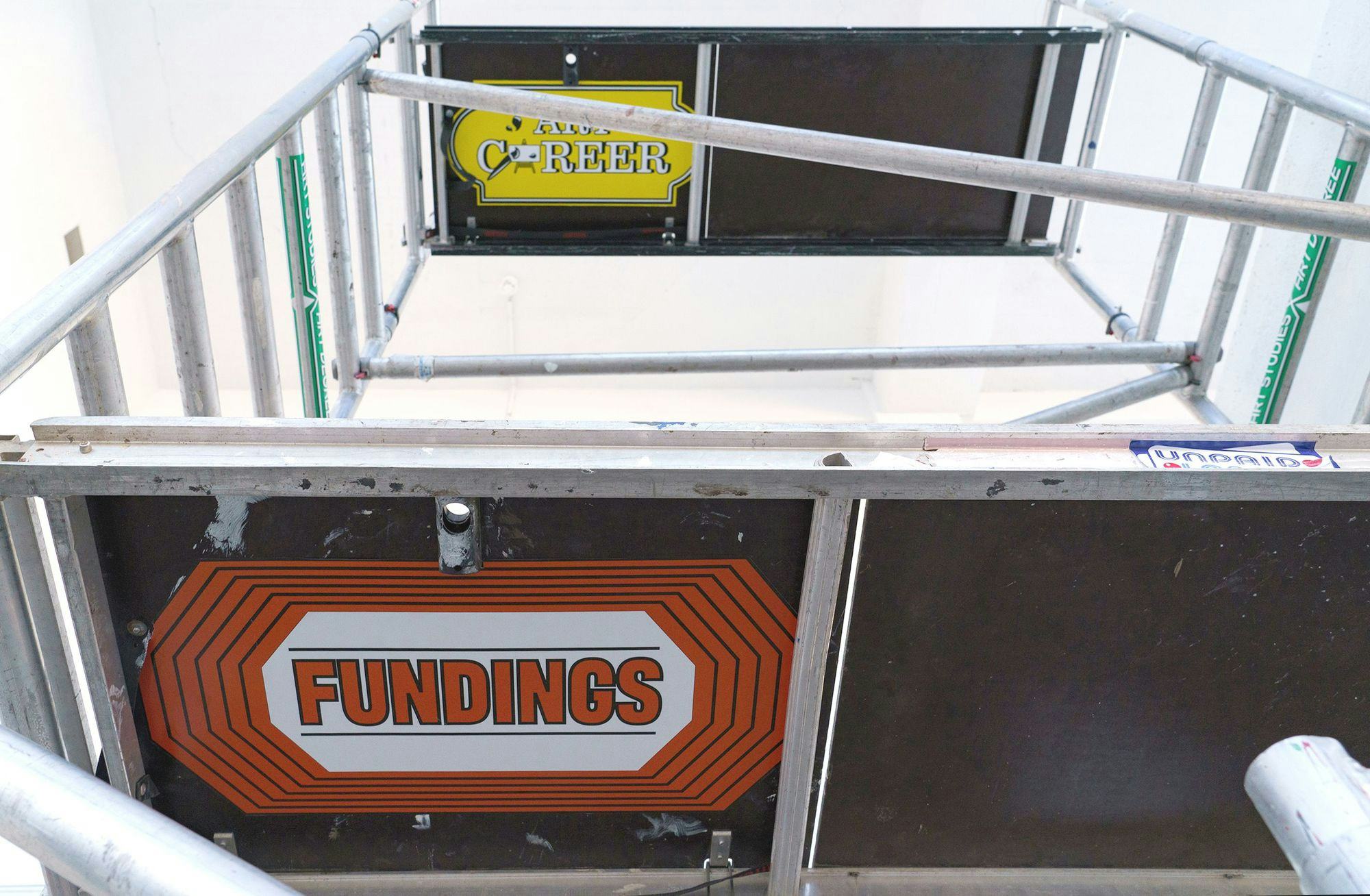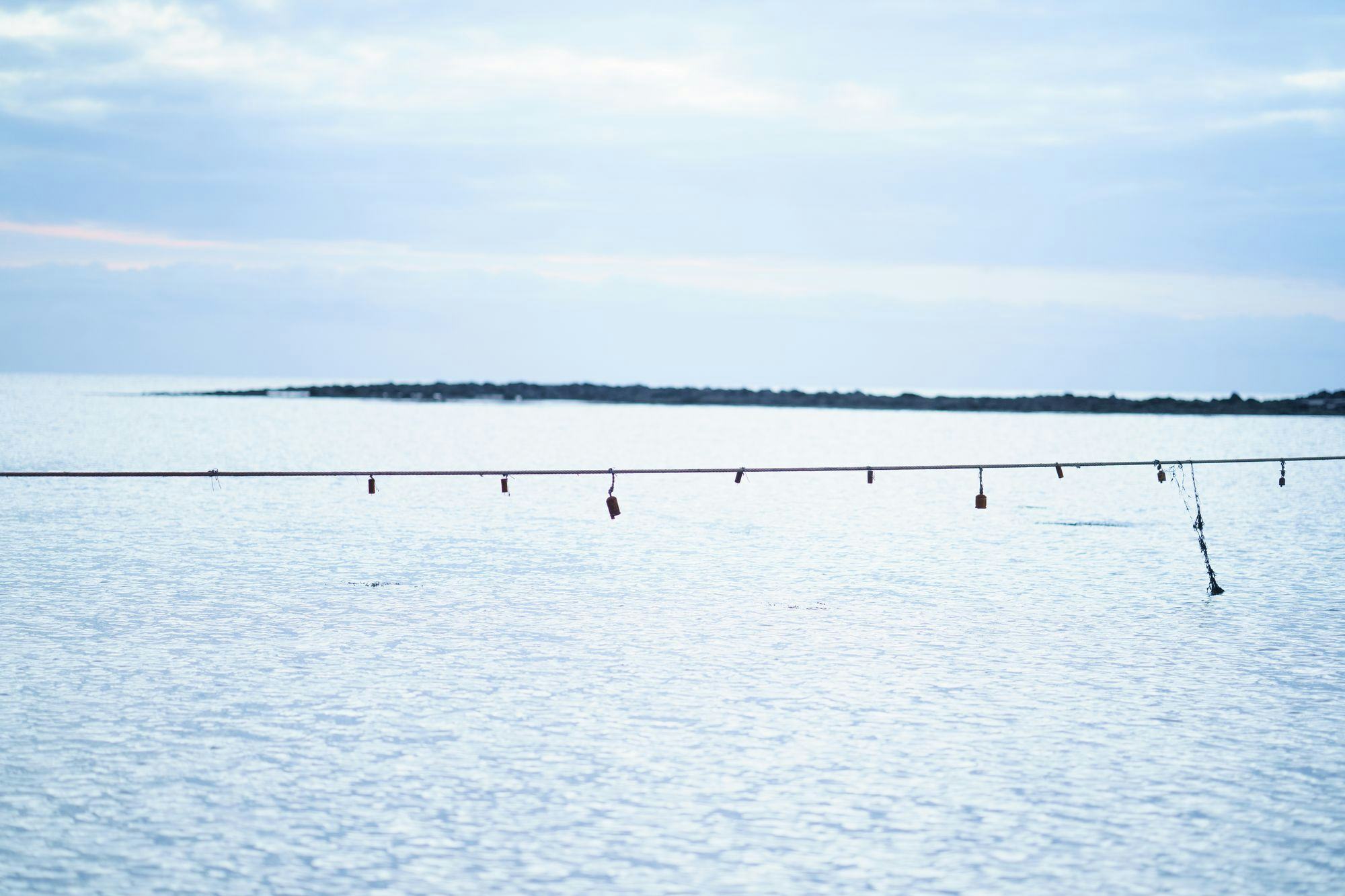Austria's representative at this year's Venice Biennale is the artist Anna Jermolaewa. She was born in the Soviet Union in 1970 but fled the country at the age of nineteen and settled in Austria. She was one of the founding members of an opposition party in the Soviet Union and one of the editors of a newspaper that was highly critical of the authorities. Jermolaewa and her colleagues were thus involved in a criminal case where they were accused of inciting opposition to the authorities and of spreading propaganda and that is why she decided to escape the country.
Jermolaewa is therefore an Austrian immigrant. Curator Gabriele Spindler points out in the exhibition catalogue that the fact that Jermolaewa is an Austrian immigrant makes the choice of her as Austria's representative a particularly appropriate one, in light of the theme and title of this year's exhibition, which has been discussed in previous columns; Foreigners Everywhere, Stranieri Ovunque. It is worth noting, just as Spindler does, that Jermolaewa was chosen before the theme of the Biennale was announced.
At first glance, the works in the Austrian pavilion seem kind of modest. The first thing you see when you approach the pavilion are five phone booths in the pavilion's garden and as you enter the pavilion you can see installations to your left and right. Even though these installations may seem simple, there is much hidden beneth their surface upon closer inspection.

On the left is the installation The Penultimate, from 2017. The installation consists of flowers in vases and potted plants that stand on chairs, stools and white pillars in the space. It is a simple and beautiful sight, a kind of still life in the form of an installation.
I am not the best when it comes to identifying plants. However, I recognize the tulips, which are yellow during my visit. They have been placed in a beautiful crystal vase that stands on a small white and slightly worn stool. Red roses have been placed in a metal vase that stands on a white pillar that lies horizontally on the floor of the exhibition space. On another stool there is a potted plant that I think is an orange tree or maybe a tangerine tree.
Thanks to the exhibition text, I can identify the flowers that I find most beautiful in the space, which are red carnations, also in a crystal vase that has been arranged on a stool. The cornflowers that are in a glass vase have faded, but judging by the pictures of the exhibition, the flowers once had this amazing blue color. Here one can also find lotuses, saffron crocuses, jasmine and cedar.
What these plants have in common is that they are all associated with revolutions: the Carnation Revolution in Portugal in 1974, the Orange Revolution in Ukraine in 2004, the Jasmine Revolution in Tunisia in 2010, at the beginning of the Arab Spring, and so on. What these revolutions have in common is that they were all initiated by ordinary citizens and were mostly peaceful. This is a moving art piece, not least because of the contrasts inherent in the medium on the one hand and its subject matter on the other. Delicate flowers that symbolize revolutions that have erupted following long-standing dissatisfaction with ruling authorities.
Opposite The Peniltumate is a large LED screen with the work Rehearsal for Swan Lake. The 150-minute-long video documents ballet rehearsals, more specifically rehearsals for Swan Lake, as the name suggests. Ukrainian ballerina and choreographer Oksana Serheiva is a co-author of the work along with Jermolaewa, which was created earlier this year. In addition to the video, the space contains a typical ballet dancer's rehearsal space, a large mirror and a barre. At the end of the barre hangs a ballerina's dress and pointe shoes can be found on the floor.
The rehearsal process is not yet complete, at least not yet. Part of the work is a performance that is performed regularly. The co-author of the work, the Ukrainian ballerina Serheiva, takes on the role of the swan and gracefully dances around the pavilion floor in pointe shoes, wearing a gorgeous ballerina dress to the accompaniment from the video work.
During Jermolaewa’s teenage years, Swan Lake became a kind of symbol of political instability. Around the deaths of national leaders such as Leonid Brezhnev and Yuri Andropov, the state television schedule was interrupted and recordings of Swan Lake were played, sometimes for days on end. In this way, the ballet also became both a harbinger and a symbol of change of power. The work plays with this association, but this time it is not the rulers that exploit the ballet. This time, the rehearsal process is intended to forbode a regime change in Russia. In that way, the art work is closely related to The Penultimate.
In the next room, a record player stands in the middle of the room and on the walls are strange, round pictures. The pictures are in fact X-rays that have been backlit. They show various bones of the body in a similar way one can imagine in a hospital; ribs, skulls and leg bones. The X-rays are of different sizes but all have one thing in common: they are round. And they all have a small hole in the middle. So they look very much like records. As it turns out, the pictures are records.
After the Second World War, many different types of music got banned in the Soviet Union. Pop, rock and jazz were banished. Nevertheless, Soviet sound engineers found a solution to circumvent the government ban. They copied records onto X-rays that hospitals had discarded. These records, which were called “ribs”, “music on bones” or simply “bones” were then bought and sold on the black market up until the time that tapes and cassettes began to make their way into the market.
In the installation titled Ribs, from 2022/24, there are about sixty such “bones” on display. They contain songs by musicians such as Elvis Presley, the Beatles, the Rolling Stones, and Petula Clark. Visitors are also given the opportunity to listen to music stored on the records every day at two o’clock. Perhaps in line with the subject matter of the installation, music from the “bones” echoes much more often than just around two o’clock. The reason is that rebellious visitors tended to start the record player and move the needle to its proper place, contrary to the rules of the pavilion.
In the hall opposite the turntable, one can find the video work Research for Sleeping Positions, from 2006. In this 18-minute video, we watch Jermolaewa try to fall a sleep on a bench at a train station in Vienna. One wonders if she will succeed. Two armrests divide the bench into three seats, forcing the artist to rest in some pretty awkward positions.
This is undoubtedly the most personal work in the pavilion. The first week after Jermolaewa reached Vienna after fleeing the Soviet Union in the late 1980s, she spent the nights at a train station, sleeping on a bench. She revisits this place in the work Research for Sleeping Positions, but rest does not come easy for her on this second visit because of the armrests that have been installed in the meantime.
At first glance, the video seems rather humorous, there's something funny about watching a person try to sleep in a place that's not meant for sleeping. But the fun wears off pretty quickly because the work sheds a strong light on what is called hostile architecture. Such architecture often targets disadvantaged groups in society, the group that is perhaps most affected by it is the homeless.
The goal of hostile architecture is to control behavior in public spaces, preferably by preventing behavior that society has defined as undesirable. Spikes or bolts have been placed on ledges and all kinds of protrusions where one would otherwise be able to lean, and benches are designed so that one cannot lie down on them. Instead of responding to social problems at their core, authorities often choose to simply push those who are seen as unwelcome away.
This work, which was made 18 years ago, speaks directly into present times in a surprising way. It reflects the position of refugees in today's society. Some have wanted to make this group a scapegoat for most of what goes a miss in contemporary society. Hostility towards that group has increased and governments around the world have erected further barriers to try to keep them out, a kind of systemic analogue to hostile architecture.
During my stay in Venice, many news striking reports related to refugee issues have been published. The Italian Prime Minister, Georgia Meloni wants to establish camps in Albania for refugees coming to Italy. There they will be kept until the outcome of their cases in Italy is known. Leaders of the European Union have also spoken about adopting similar solutions and the EU clearly seems to be planning to implement a tougher policy on immigration matters within the union. Back home in Iceland, the attempted deportation of a child with muscular dystrophy, and the entire sequence of events that followed, was a key event in the collapse of the government. And for some reason, immigration issues have become quite prominent in debates and in the promotional material of many political parties, even though the issue is not among the most important ones to voters according to polls.
It is astonishing how much lies beneath the surface in Anna Jermolaewa’s appealing and modest art works in the Austrian pavilion at this year’s Venice Biennale. The art works remind us that the fight against authoritarianism and totalitarianism is a neverending one. When considering the two wars that are most widely covered in the media today, it is clear that this message is particularly relevant in this day and age. The contrasts between the softness of the art works on the one hand and the tough and serious topics they cover on the other hand make Anna Jermolaewa's work even more effective as a result.
Newly graduated artists from Iceland University of the Arts and art theorists from The University of Iceland, interns situated in Venice, are currently working on articles and reports of key ideas and themes of current exhibitions of La Biennale.
Grétar Þór Sigurðsson is a 31 year old journalist from Reykjanesbær. He graduated with a BA-degree in Art History and Theory from the University of Iceland in 2019. He has recently been enrolled in the Art History and Art Theory MA-program at the University of Iceland, with a one-year-long exchange program at Stockholm University. Since 2020 Grétar has worked as a journalist for Kjarninn, Heimildin and RÚV - the Icelandic National Broadcasting Service.











-icelandic-pavilion-2000x2667.jpg&w=2048&q=80)

